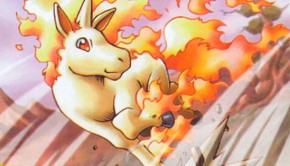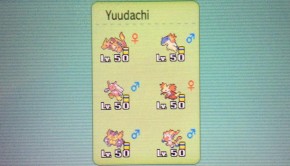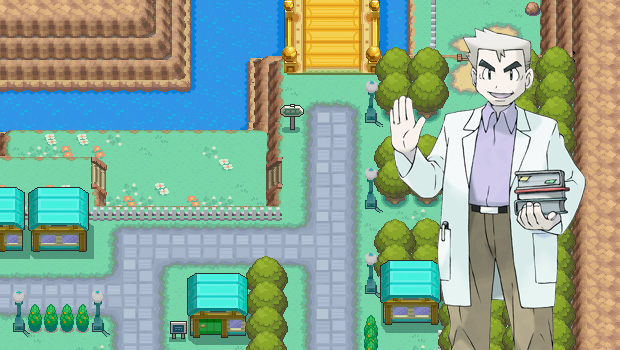Winter is Coming: A Beginner’s Guide to Hail
Hail in VGC is a double-edged sword. While Ice typing is great offensively and can take out a lot of potential threats, it is also one of the weakest types defensively, being weak to the ever common Fire, Rock and Fighting attacks seen in VGC play. This is the risk of Hail, but you can reap the rewards if played well. This guide will cover some basics but will not go into detail of movesets and EVs. Winter is coming…
It’s The Abominable Abomasnow!
The first priority for any weather based team is to set your weather. Abomasnow is the only Pokémon that is able to start a snowstorm automatically and bring the pain, so you will probably see it on every Hail based team.
Abomasnow will be the staple of your team, starting up a snowstorm whenever it enters the field with thanks to its ability Snow Warning. Since Abomasnow is the only pokémon to have received this ability to date, it is the only mandatory pokémon for a Hail team.You can use him at the start of the battle, or you can use him to cancel out other pesky weather you don’t want like Rain or, even worse, Sun. Even Sandstorms will have to bow to the mighty winter that Abomasnow brings in its wake. It is important to note that in a battle for weather control, the slower Pokémon will set its weather up instead. Fortunately, Abomasnow’s naturally low 60 Base Speed will usually ensure that Hail is set. To make this more certain, you can artificially lower Abomasnow’s speed by giving a Nature that lowers Speed and finding one with a 0 Speed IV. For this reason Abomasnow plays nicely with Trick Room teams which twist the dimensions to allow slower Pokémon to move first, allowing you to both set up your weather and move first.
Hail brings with it a lot of benefits, not just for Abomasnow alone, but also for its teammates. Most notably, Blizzard becomes a 100% accurate move while in the Hail, bypassing the Accuracy check altogether, boosted from the original 70% accuracy. Hail also activates a number of passive abilities such as Snow Cloak, which raises the user’s Evasion by one stage in the Hail, and Ice Body, which heals Pokémon that have this ability for 1/16th of their total health every turn Hail is up. Like the other weathers, Hail also affects the move Weather Ball, turning it into a 100 base power Ice-type attack. Hail also turns any Pokémon with the ability Forecast into an Ice-type.
Hail can also neuter some opposing strategies. For example, Solarbeam will only do half of its original damage with Hail up. Moonlight, Morning Sun and Synthesis also have their effectiveness cut in half — only recovering 25% of maximum health as opposed to the normal 50%. Hail also damages any non ice type for 1/16th of their total HP every turn, rounded down, if they do not have the abilities Overcoat or Magic Guard, both of which will prevent this damage.
Building Your Team
Of course Abomasnow isn’t the only pokémon you shall be using. If you want to abuse Hail to its fullest, you’ll want to also include Pokémon that will be attacking alongside Abomasnow with Blizzard as well as other Pokémon offering both offensive and defensive support. These are only a few examples of Pokémon that enjoy the Hail and is not meant to be taken as the authority — experimenting with your own combinations is half the fun! This is merely a guide to get you started thinking about what goes on a Hail team and how they work together.
Icy Attackers
These Pokémon are Ice-types that take no damage from Hail but dish out the damage to their opponents by abusing Blizzard or other powerful Ice-type attacks. While these Ice-types seem to be a natural fit for any Hail team, it’s important to remember that every team is different and adding too many of these Pokémon will double up on weaknesses already shared by the Ice-type Abomasnow.
![]()
Rotom-F is an excellent Pokémon for Hail teams due to its typing and immunity to Ground-type attacks thanks to Levitate. Rotom-F’s dual Electric/Ice typing makes it one of the only Blizzard abuser that is not weak to Metagross or Scizor’s Bullet Punch while also giving it a STAB option in Thunder or Thunderbolt for the multitude of Water-types in VGC play. It pairs particularly well with Mamoswine, being able to pull off a “DisQuake” combo as Mamoswine is immune to Rotom’s Discharge and Rotom is immune to Mamoswine’s Earthquake. Rotom’s primary selling point, however, is the ability to fire off STAB Blizzards from its 105 Base Special Attack. In particular, Rotom’s access to Trick makes it an excellent user of either Choice Specs or Choice Scarf allowing it to hit hard (or fast) and then cripple an enemy Pokémon by swapping items. Rotom can also use Will-o-Wisp to neuter enemy Fighting-, Rock- and Steel-type opponents who are largely Physical attackers and Thunder Wave to keep Speed control on your side.
![]()
Mamoswine is a great example of a Pokémon that benefits from Hail. While it doesn’t abuse Blizzard like some other Hail abusers, Mamoswine is blessed with two abilities, Snow Cloak and Thick Fat, that are both more than welcome on Hail teams, raising Mamoswine’s evasion one stage and halving damage taken from Ice- and Fire-type attacks respectively, and excellent Ground/Ice typing which gives it crucial offensive coverage against Fire-, Steel- and Rock-type attackers. Unlike many other Hail abusers, Mamoswine hits on the Physical end with powerful Physical Ice-type attacks like Icicle Crash and the Ground-type Earthquake preventing any Hail team with Mamoswine on it from being walled by Specially Defensive Pokémon like Cresselia or Blissey. Mamoswine also gets access to Ice Shard, useful for picking off weakened opponents or speedy Dragons.
Passive Aggresive Support
These Pokémon get lots of possible options to help out their teammates while still being able to deal damage. They are either Ice-types themselves or capable of avoiding Hail damage and playing nicely with the rest of a Hail team.
![]()
Dewgong may seem to be a surprising choice, but it is a surprisingly bulky Pokémon, especially when abusing its Dream World ability, Ice Body. With Ice Body, Dewgong recovers 1/16 of its health every turn that Hail is up, giving it some unexpected durability. Dewgong’s chief selling point, however, is its access to Fake Out which will Flinch one of your opponent’s Pokémon the first turn Dewgong is on the field. Dewgong is also an excellent user of Icy Wind to control the Speed of your opponent’s Pokémon and receives Safeguard, preventing your opponent from spreading Paralysis, Confusion, Sleep or other detrimental status effects to your team.
![]()
Froslass is blessed with Ghost/Ice typing making it immune to Fighting-type Pokémon. Not only that but its ability Snow Cloak also raises its Evasion one stage in the Hail, giving Froslass the potential to be immune to any attack. Froslass has an excellent 110 Base Speed, the fastest Ice-type not named Weavile, which makes it an excellent user of a variety of supporting attacks. In its arsenal Froslass can choose from Icy Wind and Thunder Wave for Speed control, Taunt to shut down set ups, Confuse Ray and Swagger to disrupt your opponent, Disable to eliminate a threatening attack, Light Screen to boost your team’s resistance to Special attacks, and Destiny Bond as a last ditch effort to take an enemy down with you.
![]()
Reuniclus is not an Ice-type Pokémon but is still immune to Hail damage thanks to its ability Magic Guard. Reuniclus can act as a support Pokémon, access to both Reflect and Light Screen is nothing to sneeze at, but it really excels at setting Trick Room and then punishing your opponent for letting it set up with powerful Psychic-type attacks that eliminate Fighting-types set to wreak havoc on your Ice-type team. Reuniclus also learns Energy Ball to help cover Water-type Pokemon that Hail teams can struggle to deal significant damage to.
Not an Ice-Type
These Pokémon are not Ice-types and don’t necessarily abuse Hail as much as help patch up Hail’s many common weaknesses. Since one of your team slots is taken up by Abomasnow and you have likely stocked a couple of other Ice-types to abuse Blizzard or Hail’s other advantages, you are going to want to have a couple of these Pokémon on your team to balance out your weaknesses and offensive options.
![]()
Chandelure makes for an amazing Hail partner thanks to its immunity to both Fire- and Fighting-type attacks. Chandelure particularly scares off users of Heat Wave, the most common Fire-type attack, who will not want to give your Chandelure a Flash Fire boost which turns any of Chandelure’s Fire-type attacking options into deadly options. Chandelure’s decent Speed and defensive stats can ensure that it sticks around long enough to keep your opponent’s main Hail counters on their toes.
![]()
Mienshao is frail but makes up for this by being immune to flinch with Inner Focus and getting a wide variety of excellent support options. Most notably, Wide Guard will protect from all spread attacks particularly Heat Wave and Rock Slide. Mienshao also has access to Fake Out, one of the best support moves, which will flinch an opposing Pokémon the first turn Mienshao is on the field, disrupting your enemy’s set up or allowing you to implement your own strategy. Offensively, Mienshao is one of the few Fighting-type Pokémon to receive Acrobatics, giving it a solid option against enemy Fighting-type Pokémon that love to face Hail teams, particularly Thick Fat Pokémon like Hariyama. Mienshao can also use Drain Punch to scare off enemy Rock-type Pokémon as well as helping make up for Hail damage.
These are just a few examples of Pokémon you can use when making a Hail team. There are endless possibilities to experiment with and any number of successful Hail teams out there waiting to be discovered. Practice and see what Pokémon fit your style best and build from there to make your team even better.

An ideal depiction of what the opposing team should look like after the battle
Dealing with Opposing teams
Hail teams have some unfortunate matchups versus popular teamstyles. The most dangerous matchups for Hail are the uncommon Sun and much more common Sand teams. In the case of the former, Hail teams need to play around the boosted Fire-type attacks that Sun sweepers may have, in addition to worrying about being put to Sleep by Sleep Powder. Fortunately, Hail teams are usually capable of dispatching the Grass-type Sun sweepers with ease, as none of them enjoy eating a Blizzard. Sand is a little trickier for Hail to handle as the primary Sand sweeper Excadrill’s secondary Steel-typing negates the primary Ground-typing’s Ice weakness. Hail teams will also have trouble dealing with any Rock-type Pokémon on a Sand team. Not only does Rock resist Ice, but Rock-types receive a 50% Special Defense boost in the Sand, allowing them to shrug off any Blizzards that hit through the Sandstorm. On the plus side, many other Sand sweepers like Garchomp and Landorus are petrified of Ice-type attacks, both sharing a 4x weakness to the type. If you can keep Hail up you can frighten off some of Sand’s scariest attackers.
On the other hand, Hail has a very favorable matchup versus Rain teams. Abomasnow itself is often teched onto non-Hail teams because of how easy it is for Abomasnow to switch into Water-type atttacks and change the weather from Rain to Hail. Abomasnow’s secondary Grass-typing can also be enough on its own to take down poorly constructed Rain teams. It is important to note, however, that many other Hail abusers can struggle with Rain teams packed with Water-type Pokémon who resist Blizzard. Hail teams also need to be careful about any Steel-type Pokémon that has found its way onto a Rain team as well as Toxicroak who threatens with STAB Fighting-type attacks, Sucker Punch and its surprising bulk in the rain.
The importance of dealing with Fire-, Rock-, Fighting- and Steel-type Pokémon should already be evident given how many times they’ve appeared already. The threat they pose to Hail teams cannot be exaggerated, however — particularly Pokémon like Terrakion or Heatran who can threaten with multiple attacks, both spread and single target, that may catch your regular coverage Pokémon off guard. Still, as with any team, you can play around these weaknesses with Team Preview so long as you know your team, how it plays and what’s important.
What Have We Learned?
Advantages of Hail
- Blizzard becomes a 100% accurate move in Hail that bypasses the Accuracy check entirely
- Snow Cloak raises Evasion of the Pokémon by 1 stage in Hail
- Ice Body heals 1/16 of your Pokémon’s health in Hail
- Synthesis, Moonlight and Morning Sun heal for 25% of a Pokémon’s max health instead of 50%
- Hail damages all non Ice-type pokemon if they do not carry Overcoat or Magic Guard
- Solarbeam becomes less effective
Disadvantages of hail
- Synthesis, Moonlight and Morning Sun heal for 25% of a Pokémon’s max health instead of 50%
- Hail damages all non Ice-type pokemon if they do not carry Overcoat or Magic Guard
- Pokémon that benefit from Hail have common weaknesses
Closing words
Hail is one of the riskier team styles thanks to its relative lack of abusers and many shared weaknesses. You will come across a wide variety of teams, most of which will be able to make life difficult for your Hail team. There are some moves that could come in handy when facing these teams. Think of moves like Wide Guard that protect you from the inevitable spread moves or Fake Out, giving your partner Pokémon a breather to set up or launch a devastating attack. Skills like Follow Me or Rage Powder can work as well, provided your opponent is not using spread attacks. You’ll have to take risks sometimes, but in the end playing with a Hail team can be very rewarding and, most of all, fun.
Article image created for Nugget Bridge by ryuzaki. See more of ryuzaki’s artwork on deviantART.










